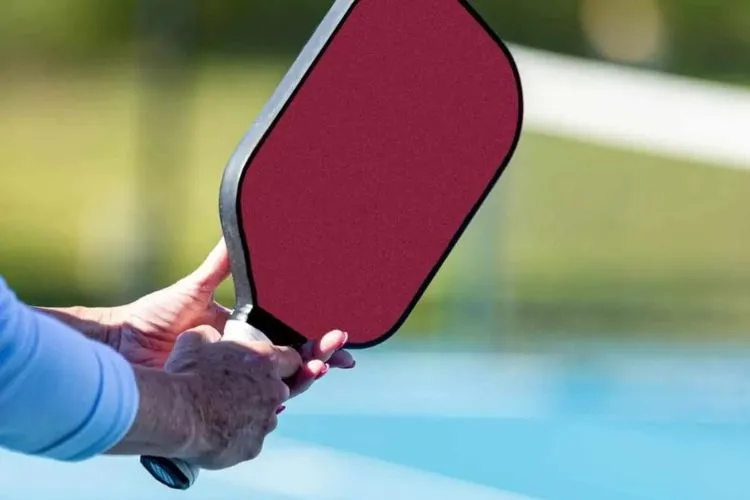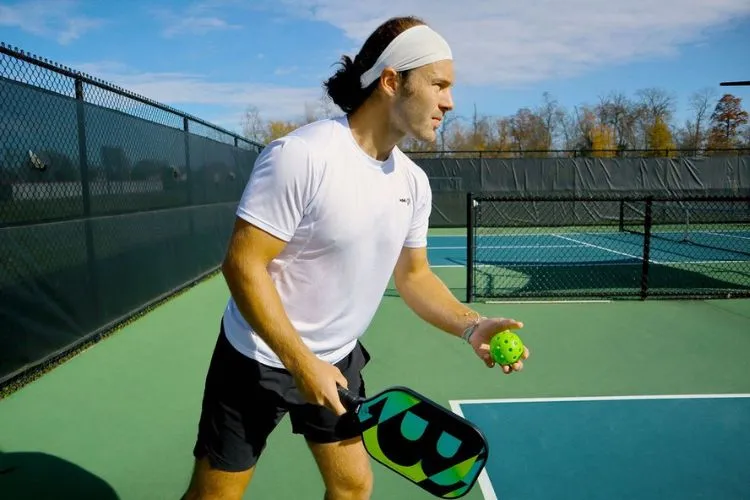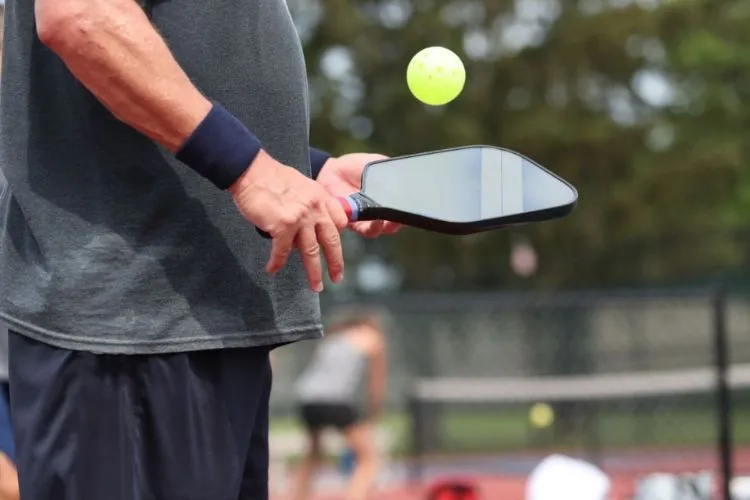Pickleball, a paddle sport that combines elements of badminton, tennis, and table tennis, has surged in popularity due to its accessibility and the engaging experience it offers to players of all ages and skill levels.
As players look to improve their game, one question often arises: Can you switch hands in pickleball?
This article delves into the rules, techniques, and strategic considerations associated with hand-switching in pickleball, providing insights to both novice and experienced players.

Can You Switch Hands In Pickleball?
Yes, you can switch hands in pickleball. The rules set by the USA Pickleball Association (USAPA) allow players to switch the hand holding the paddle during a game.
This flexibility enables players to adapt to various situations on the court, enhancing their reach and ability to respond to difficult shots.
However, it’s important to note that while switching hands is permitted, using two paddles simultaneously or changing paddles during a rally is not allowed.
Players must adhere to the one-paddle rule, meaning the paddle cannot be switched between hands in the execution of a single shot.
Effective hand-switching can offer strategic advantages, but it requires practice to maintain precision and power when playing with the non-dominant hand.
Understanding the Rules
According to the official rules set forth by the USA Pickleball Association (USAPA), players are permitted to switch hands during play. This flexibility allows players to adapt to various situations on the court, such as reaching for distant shots or recovering from awkward positions.
However, while the rules accommodate hand-switching, players must still adhere to the one-paddle rule, meaning the paddle cannot be switched between hands during the execution of a single shot.
The One-Paddle Rule Explained
The one-paddle rule is a crucial regulation that ensures fairness and consistency in play. It stipulates that while players can switch the paddle between hands, they cannot use two paddles simultaneously or switch paddles mid-rally.
This rule maintains the sport’s integrity, ensuring that skill and strategy, rather than equipment advantages, dictate the game’s outcome.
Techniques and Strategies for Hand-Switching

Mastering the Art of Hand-Switching
Effective hand-switching in pickleball requires practice and precision. Players should focus on developing their non-dominant hand’s coordination and strength to mirror their dominant hand’s capabilities.
This dual-handed proficiency enables a more versatile game, allowing players to respond to shots with greater agility and reach.
Strategic Advantages of Hand-Switching
Switching hands can offer strategic advantages, such as improved coverage of the court and enhanced ability to handle shots to the body. It also allows for unexpected shot angles, which can catch opponents off guard.
However, players must weigh these benefits against the potential for decreased precision and power when using their non-dominant hand.
Common Mistakes and How to Avoid Them
Overreliance on Hand-Switching
One common pitfall is overreliance on hand-switching. Players should use this technique judiciously, as excessive switching can lead to confusion, reduced power, and diminished accuracy.
The key is to find a balance, using hand-switching to complement, rather than dominate, your playing style.
Timing and Coordination Challenges
Another challenge is mastering the timing and coordination required for seamless hand-switching. This skill demands practice, as poor execution can leave players vulnerable to quick returns and aggressive shots from opponents.
Drills that simulate game situations can help players refine their hand-switching technique and improve their reaction times.
Training Tips for Effective Hand-Switching

Drills and Exercises
To enhance hand-switching skills, players should incorporate specific drills into their practice sessions. Exercises that focus on strengthening the non-dominant hand, along with drills that simulate game-like scenarios requiring hand-switching, can be particularly beneficial.
Consistency and repetition are key to developing muscle memory and confidence in using both hands during play.
Professional Guidance
Seeking guidance from experienced coaches or advanced players can accelerate the learning process. These experts can provide personalized feedback and tips tailored to an individual’s playing style and challenges.
Additionally, watching professional matches can offer insights into how top players utilize hand-switching effectively.
Frequently Asked Questions (FAQs)
Can switching hands affect my grip?
Yes, switching hands can affect your grip, especially if your non-dominant hand is not as accustomed to holding the paddle. Practicing with both hands can help develop a consistent and effective grip, regardless of which hand is in use.
Is hand-switching recommended for beginners?
Hand-switching can be challenging for beginners, who may benefit more from focusing on fundamentals like footwork, paddle grip, and shot placement. Once these basics are solidified, players can experiment with advanced techniques like hand-switching.
How can I improve my hand-switching speed?
Improving hand-switching speed involves practicing the motion in a controlled environment and gradually increasing the pace as your comfort and coordination improve. Drills that mimic the quick decision-making required during actual play can be particularly effective.
You may also read: Can You Touch The Net In Pickleball | What is a Foot Fault in Pickleball?
Conclusion:
Switching hands in pickleball is a legal and potentially advantageous technique that offers players additional flexibility and reach on the court. While it presents strategic benefits, it also requires careful consideration and practice to master.
By understanding the rules, refining their skills through targeted drills, and learning from experienced players, individuals can effectively incorporate hand-switching into their game, enhancing their performance and enjoyment of the sport.
Whether you’re a beginner looking to explore new strategies or an advanced player seeking to optimize your game, mastering the nuances of hand-switching in pickleball can provide a competitive edge and a rewarding challenge.

Pickleball’s more than a game to me—it’s a passion. I write, sharing its highs and lows, the thrills and the lessons. Some tales might draw you to the court, while others give a hint of the game’s magic. So, curious about my journey? Ready to dive deep into the world of pickleball with me? Let’s go.
